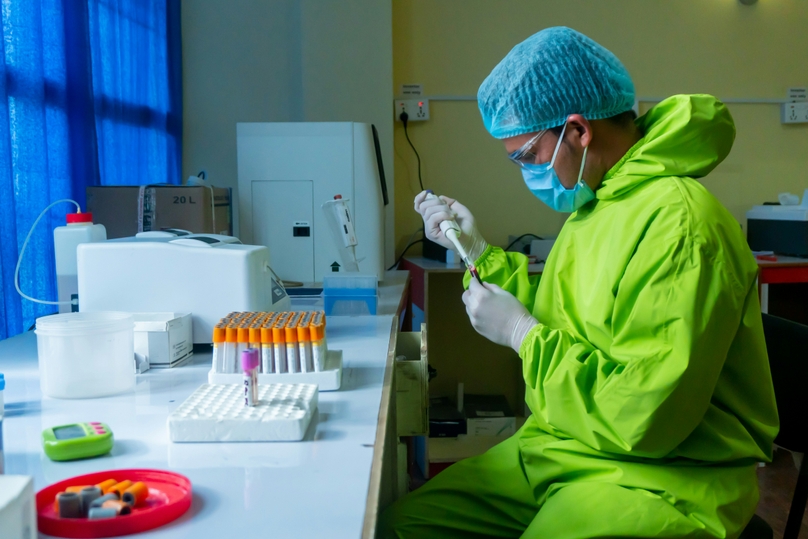Lateral Medullary Syndrome is a rare neurological disorder that can have a profound impact on patients' lives, making it essential for researchers to comprehend its causes and symptoms. Lateral Medullary Syndrome, often referred to as Wallenberg syndrome, results from a blockage or injury to the lateral part of the medulla oblongata, a vital part of the brainstem responsible for several crucial functions.
This is where Genemod comes into play. With our automation and collaboration solutions, we empower biopharma research teams to delve into the intricacies of conditions like Lateral Medullary Syndrome with ease. Our user-friendly design tools for sequence editing enable scientists to streamline their experiments and enhance productivity, all while managing their research inventory efficiently. By leveraging Genemod's capabilities, biopharma research teams can navigate the complexities of life sciences R&D effectively, ultimately driving forward their quest for innovative solutions in the field. Don't miss out on the opportunity to revolutionize your research endeavors – Genemod is here to help you every step of the way.
Anatomy of the Medulla and Its Significance
The medulla, a critical part of the brainstem, plays a vital role in controlling several essential functions, including breathing, heart rate, and blood pressure regulation. Located at the base of the brain, the medulla acts as a bridge between the spinal cord and higher brain regions, facilitating the transmission of signals between the two. Additionally, it houses various cranial nerve nuclei responsible for functions such as swallowing, speech, and facial movements. Understanding the medulla's anatomy and its interconnectedness with other brain structures is fundamental to comprehending the impact of lateral medullary syndrome on neurological function.
What Causes Lateral Medullary Syndrome?
Lateral medullary syndrome, also known as Wallenberg's syndrome, results from an interruption of blood flow in the posterior inferior cerebellar artery (PICA) or the vertebral artery, both of which supply blood to the medulla. The most common cause of lateral medullary syndrome is ischemia, where a blood clot or plaque obstructs these crucial arteries. Less frequently, the syndrome may be caused by other factors, such as vascular malformations or tumors pressing on the medulla. Understanding the underlying causes of lateral medullary syndrome is vital for diagnosis and treatment planning.
Symptoms and Clinical Presentation of Lateral Medullary Syndrome
Lateral medullary syndrome presents with a distinct set of neurological symptoms. These symptoms may include difficulty swallowing (dysphagia), hoarseness of voice (dysphonia), facial numbness or weakness, dizziness, and loss of balance. One of the hallmark features of the syndrome is pain and temperature sensation loss on one side of the face (ipsilateral) and the opposite side of the body (contralateral). These symptoms often result from the specific brain regions affected by the interrupted blood flow. Identifying these symptoms and their progression is critical for healthcare professionals to diagnose and initiate appropriate treatment strategies.
Diagnosis and Medical Evaluation
Healthcare providers typically begin by taking a detailed medical history, paying particular attention to the patient's symptoms and their progression. A physical examination is then conducted to assess neurological deficits, such as facial weakness, sensory loss, or difficulty swallowing. Imaging studies, such as magnetic resonance imaging (MRI) or computed tomography (CT) scans, are instrumental in visualizing the brainstem and identifying any vascular abnormalities or lesions that may be causing the syndrome. Additionally, vascular imaging techniques, such as angiography, may be employed to assess blood flow within the affected arteries. A definitive diagnosis of lateral medullary syndrome is typically based on the combination of clinical findings and imaging results. The meticulous diagnostic process ensures that patients receive accurate assessments and tailored treatment plans.
Treatment and Management Options
In cases where ischemia is the root cause, the primary goal is to restore blood flow to the affected areas of the medulla. Treatment may involve medications to dissolve blood clots (thrombolytics) or procedures to remove arterial obstructions, such as angioplasty or stent placement. Symptomatic relief is also a crucial aspect of management. Patients may receive therapies and interventions to address specific symptoms, such as dysphagia or dysphonia. Physical therapy and rehabilitation programs aim to improve balance and mobility. Additionally, supportive care measures, including pain management and speech therapy, may be implemented. The tailored treatment plan for each patient is crafted based on their unique clinical presentation and needs, ensuring the best possible outcome.
Coping Strategies and Support for Patients
Coping with lateral medullary syndrome can be challenging, given its impact on various aspects of daily life. Patients often face difficulties in swallowing, speaking, and maintaining balance, which can significantly affect their quality of life. Coping strategies and support mechanisms are essential components of comprehensive care. Patients benefit from access to speech therapists, occupational therapists, and physical therapists who can help them regain functional independence. Support groups and counseling services provide emotional and psychological support to both patients and their families, helping them navigate the physical and emotional challenges associated with the syndrome. Education and communication play a vital role in empowering patients to understand their condition and actively participate in their care. By fostering a supportive and holistic approach to management, healthcare providers and support networks can enhance the well-being of individuals living with lateral medullary syndrome.
Unlock the Potential with Genemod
Join us in accelerating biopharma research, managing inventory effortlessly, and improving collaboration within your life sciences R&D team. Say goodbye to the complexities of Lateral Medullary Syndrome and embark on a journey of discovery with our user-friendly design tools for sequence editing. Boost productivity, streamline experiments, and make big ideas a reality today!












